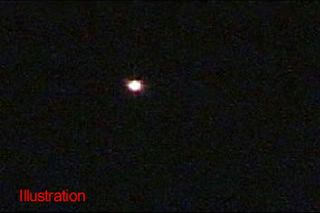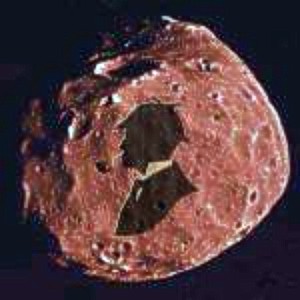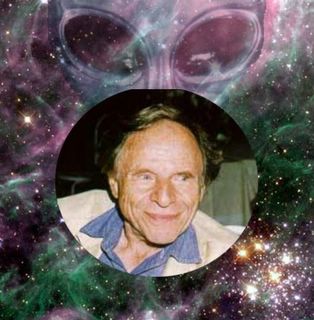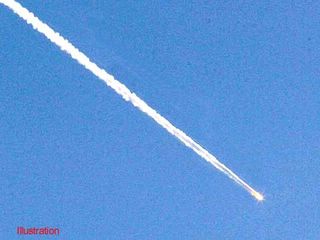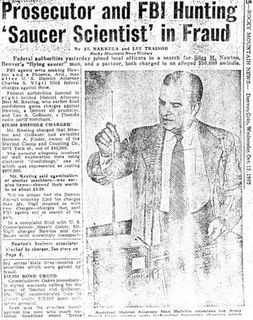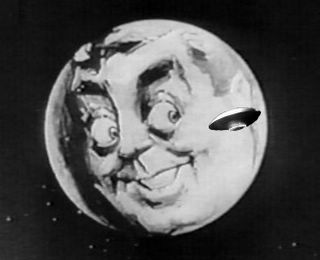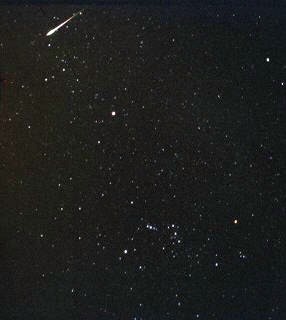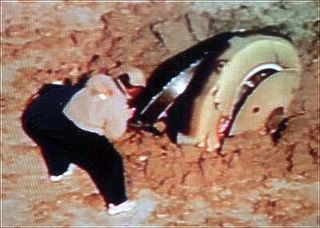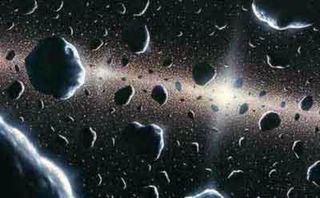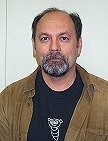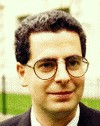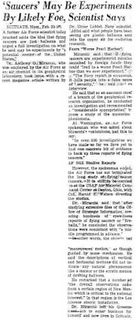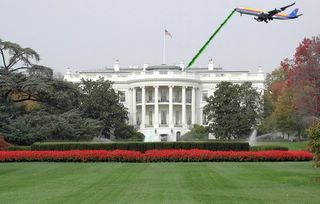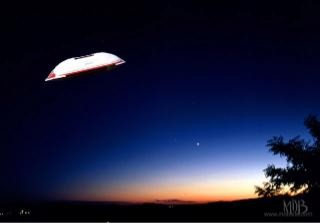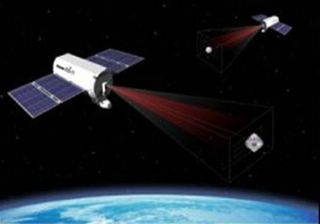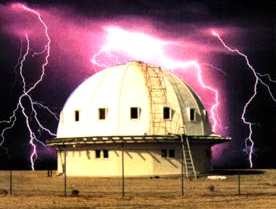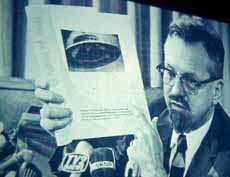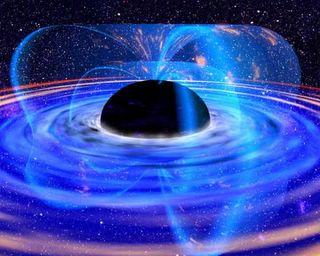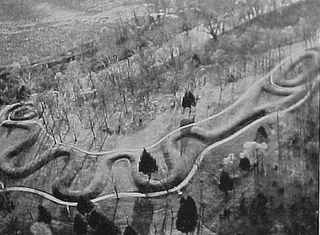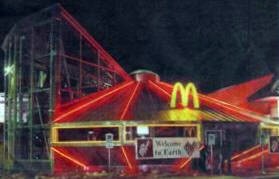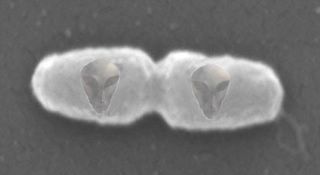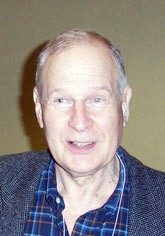
The NASA Moon Photos
My Story of dealing with NASA in the 1970's
by Vito Saccheri
(C) 1995, Houston Sky
From: "Houston Sky" No.5, June/July 1995
A Houston-area MUFON publication.
4-12-05
In 1979, I was a project manager for a privately owned engineering company doing business with the Venezuelan oil industry. My counterpart in Venezuela, our client's chief engineer, an American engineer named Lester Howes, had come to Houston on business.
Les and I had spoken by phone and telex for years (no fax machines back then), but we had never met. We hit it off when he arrived, and after a few days, he confided that he had an ulterior motive in coming to Houston. After asking me to keep an open mind, he told me he was both an amateur astronomer and a ufologist and that he wanted my help in obtaining access to secret photos held somewhere inside NASA. I was speechless. When I finished laughing, I realized he was dead serious. Some of the guys at work thought Les was just a little light in the loafers, and others thought he was just plain crazy, but I could see that he was concerned about what I would think of him. After all, we were professional engineers, and he had taken quite a chance with me.
Les showed me a small paperback book entitled "Somebody Else Is on the Moon," written by a former NASA scientist, George H. Leonard. Leonard had been working in the photo intelligence division of NASA. His job had been to interpret moon pictures taken by the unmanned space probes we were sending there during the early and mid-sixties. NASA was mapping the moon, scoping out possible landing sites for the future manned missions.
Les lent me the book, and I read it overnight. Leonard had come across photos he felt confirmed the presence of a very ancient-and possibly current-civilization on the moon. He explained that in 1961, President Kennedy had committed the USA to reaching the moon within a decade, primarily because throughout the 1950s, the scientific community had been rocked by observatories around the world, which began reporting and later confirming that "moon craters" were actually disappearing, right out from under the watchful eyes of their state-of-the-art telescopes! Since the possible ramifications were obvious (and presumably, since the Roswell incident had already gotten the government's attention), the powers that be had decided that Uncle Sam had to be the first to reach the moon.
After arguing futilely with NASA authorities about releasing the photos, Leonard published them himself in his book. He felt the taxpayers had a right to know what NASA knew, pointing out that despite a nine-year mobilization effort that had cost billions of dollars, NASA had shut down the entire moon project after only a few landings. His contention was that we had confirmed that we were trespassing! The small photos would show little, so he provided hand-drawn sketches to accompany each photo. And he published the special NASA identification code numbers for each picture.
When I finished the book, I called Les and said I was intrigued and would help. The very next day, we made the first trip out to NASA and spent the day taking the guided and self-guided tours. On the second day, we made our move.
We entered the public orientation building and told the receptionist that we wanted to make arrangement to see some moon pictures. With no clue where to start, she eventually directed us to her supervisor, who was equally at a loss. Apparently, no one charged with dealing with the public knew where NASA kept its photos-or whether they kept them at all. And no "Photo Records" department showed up on any list.
We were passed around to at least four other people before someone admitted that NASA had lots of photos "somewhere" on the complex, but that the public wasn't permitted to view "unauthorized" photos of any project. That's when we changed our strategy. Les blurted out, "Isn't it true that NASA is a civilian agency funded by taxpayer money?"
Confusion spread over her face, and I added, "Well, we're two taxpayers, and we're here to see our pictures. Who's got them?"
Before she could recover, we flashed Leonard's book in her face. I continued, "What's so unauthorized about pictures that have already been published?" From then on, we decided to stay on the offensive at all times.
Reinforcements were called in, and we soon found ourselves having the same conversation with the big boys from administration. None had seen the book, but significantly, one had taken the time to confirm that Leonard was in fact a former NASA scientist-at the Jet Propulsion Lab, from what I could gather. This threw them, and they seemed even curious to learn about the book. For after all, the information had been generated by NASA in the first place. We settled for a truce and to return the next day. Before leaving, however, we reiterated that these two taxpayers had every intention of going to the mat with whoever was holding back "our photos."
To make a very long story short, we spent the next several days filling out enough forms to give a woodpecker a headache. My office advised me that NASA had called to confirm my employment history and to inquire about Les. His hotel advised that someone had called to confirm that he was staying there. Obviously, the wheels were turning. Finally, someone called to say we could see the photos. We returned to NASA thinking we had finally succeeded. But success was not to be so easy. We were directed to a Building 30, which had not been on the tour and which didn't even exist. Building 30 A turned out to be empty so we walked into Building 30 B and found ourselves in the middle of a high-security area where an existing mission was being monitored. Realizing that we were somewhere we should not have been, we tried to blend in. Failing miserably to do so, we were soon unceremoniously tossed out. Security personnel demanded to know how we had passed the civilian section and what was this about moon pictures, taxpayers, and a book about the moon? We knew we were really in sheep dip when security not only whisked us out of the building but escorted us off the premises altogether.
The next day, after some scrambling on both sides, officials apologized to us for the mix-up. For our part, we insinuated that at least one thousand photocopies of the Leonard book could rain down on everyone on the space center's mailing list. We were counting on this bluff to get us past what we considered an impasse. It was time for NASA to act. After all, we weren't a couple of underwater pipe welders from Boise... We were fellow engineers, brothers of the blood!
Finally, some serious discussions transpired. The photo library, we were told, had been relocated off site to the "Lunar Landing Observatory" directly adjacent to the east NASA property on NASA Road 1. They would be expecting us in two more days at 8:00 AM.
Two days later, we drove east on NASA 1 past the main entrance of the facility, found a chain-link fence that marked the eastern limit of the property line, expecting to see a building or sign. Nothing but a heavily wooded area! Driving back and forth along the road trying to decide whether they had done it to us again, we noticed a narrow dirt road running back into the woods directly along NASA's fence line. Hung on the chain between two small posts was a sign that read simply: "No Trespassing." In- stinct told us this had to be the place. We lowered the chain and drove about three-quarters of a mile down the dirt road, which U-turned back toward the highway. Directly behind the trees and camouflaged by the woods was our building. There was no number, only a small plaque near the door that read "Lunar Landing Observatory" in half-inch high letters. Somehow we weren't surprised.
Upon entering, we found ourselves in a small alcove. A large main room buzzing with people was off to the right, and what appeared to be a small broom closet was on the opposite wall. When we told the receptionist we wanted the library, she pointed toward the broom closet, which as it turned out, opened onto a winding stairway leading down into a dimly lit under-ground tunnel. I'm certain it took us back toward the NASA property line.
At the end of the tunnel was a large room where we found ourselves standing in front of a wall-to-wall counter separating us from the librarian, who was sitting on a stool. I seem to remember that his name was Roger. He explained that there were at least two million photos in the library, everything NASA had ever photographed since year one. Unfortunately, no one could see "random" photos, as time was always short and filing systems complicated. In other words, to see any picture, you need its specific code number.
Roger was surprised that we had all the numbers (no one had told him about the book). We handed him our list, thinking we had hit pay dirt at last. But after a quick glance, he gave us the bad news: the numbers were meaningless in Houston. He explained that for security reasons, NASA had split the country into five regions, each with a duplicate set of records and a different code number system. Leonard's numbers weren't applicable in this facility. I asked where the master list was kept, and Roger replied at Langley, Virginia. Les and I looked at each other... We didn't have to say it, but we suspected who that meant.
We huddled in the corner for a few minutes trying to decide whether this was another stalling effort. But we had come too far to give up. We informed Roger that we wanted to proceed. He said that someone in the NASA complex had the proper forms to start the ball rolling. He just wasn't sure who since no one had ever requested the photos before. We were the first, he said, at least in Houston.
A few days later Roger called us to come fill out new forms, though there wasn't much they didn't already know about us. It took two more days, but our summons finally came. Roger announced that the photos were ready for our inspection. There were, however, strict rules: we were to get three eight-hour business days. We were not allowed pens, pencils, paper, calculator, camera, or recording devices of any kind. Nor could we be left alone with the photos. We were allowed only the book and a magnifying loupe. We would be escorted in and out for lunch and bathroom breaks. If we agreed to these terms, he said, we could begin at nine o'clock the next morning. We arrived at eight.
This time, we were escorted in by two men. We found five extra-long conference room tables set up in a U shape. We had expected to find only the pictures listed in Leonard's book. To our amazement, there were thousands of photos, all in sets of numerical order. Leonard had mentioned that the photos were numbered sequentially by the cameras. He also had mentioned that each time the on-board computer analyzing a photo picked up an anomaly, it triggered a sequence of additional photos that zoomed in on the target closer and closer.
The photos were huge, approximately 32 by 24 inches, with a dull grey, almost dull-black look. On the back of each, technical information was recorded, such as the probe's height above the moon's surface while it was taking the picture, the angle of approach, and the location of the sun in relation to the capsule.
Frustratingly, we had all the technical data for triangulation--simple trigonometry and algebra were all that we needed to compute the size and distance of anything shown. But without paper, calculators, or pencils, we were limited to what we could do in our heads, and we weren't up to it--the numbers were too big, the angles too acute. We had to rely on Leonard's numbers. But we verified everything that he had seen.
To this day, I can remember these views: A boulder that seemed to have been rolled uphill, leaving its tracks in the side of the hill; obvious machinery on the surface, showing bolted sections; three dilapidated "bridges" crossing a chasm that reminded me of the Grand Canyon; pipe fittings that looked like four-way Ts (or Xs) that could be seen in every photo, some with their ends turned up or down as they hung over the edge of a crater; three surprising pyramids that prompted me later to closely study the Egyptian Giza pyramid complex; apparent pipelines criss-crossing the surface, running to and from craters; a UFO rising from the surface and photographed directly above a crater; and perhaps the most memorable, the unmistakable figure of a rectangular structure placed squarely in the biggest crater pictured- the structure looked either very old or under construction, but the crater had to be miles wide, and the camera angle gave a perfect three-dimensional view.
The clarity and resolution were unlike that of anything I had seen before or since, and I shudder to think that this was only the beginnings of the spy-in-the-sky technology that has evolved since then.
Nobody said much at all for three days. Lester was in hog heaven, having realized his greatest ambition. And I was hooked on UFOs. On our last day, actually during our last hours, I had seen enough and decided to stretch my legs. As I was escorted back to the main room, I noticed a false panel that was slightly ajar and peeked inside. Floor-to-ceiling bookshelves were filled with white three-ring binders. Roger volunteered that most of the binders were filled with the details of NASA's scientific experiments conducted in space. The rest, he said, were simply transcripts of the manned space flights, including the moon landings. Since he had gotten to know us over the three days and had enjoyed seeing the photos himself, he gave me a wink and a nod and allowed me to enter the room unescorted.
I spent most of the remaining time poring over the scientific data, as I wasn't much interested in the transcripts. After all, along with four billion others, I had watched the first lunar landing on TV. Fortunately, however, I decided to browse some transcripts and flipped casualty through a few, killing the last 15 minutes of time. Then my eyes caught it- "Houston, we've got a bogey at two o'clock."
And there was more- "Roger that, Apollo. Switching to alpha. Roll eight degrees and begin sequence... "
"Roger, Mission Control. Confirming alpha."
Though I knew instinctively what it meant, I couldn't believe what I was reading. I raced through the pages and other mission transcripts and found similar dialogue-
"Mission Control, we've got Santa Claus coming over the hill...."
"Roger, Apollo. Hold your fix. Switching bravo. Do you copy?"
"Roger, Houston. Bravo link...."
These guys were reporting UFO activity, but I couldn't remember ever hearing this during the live TV broadcasts of lunar missions in `69 and `70. I was too dumbfounded to say a word and too scared to tell Les or Roger. I didn't want to get either of them in trouble-we had no clearance to see these documents.
So I just kept my mouth shut while Les asked Roger if there was any way to buy some of the pictures we had reviewed. Roger gave us more forms to fill out and told us it would take several weeks. When the pictures arrived, Les was back in Venezuela. They were lousy as we expected, with almost no resolution. No one who saw them was impressed, least of all me. But I remained preoccupied all the same, particularly with my other find.
Not until years later did I mention the transcripts to a few close friends. One eventually mentioned a special lady he thought I should meet. Since I don't have permission to use her name, I'll call her Jane. Jane was a college coed at the time, transcribing audio tapes for NASA. I eventually asked her how astronauts could talk about UFOs during live broadcasts being transmitted all over the world without anyone hearing their conversation.
She explained that the space program had developed many technologies which at the time had not been declassified or adapted for commercial use. One of these new developments-unknown to the general public-was instant replay video, which would become common later. But in 1969 and 70, only a handful of people were aware of it. Thus, NASA could switch the Mission Control picture to a live broadcast of a news reporter standing next to a full-scale mockup, and while a viewer's attention was diverted, the real stuff was happening behind the scenes. It's no wonder that in the early days, only military pilots were qualified to be astronauts. These were the guys with the real right stuff-they knew how to keep their mouths shut!
When I met moon photo researcher Marvin Czarnik in 1995, I learned that he had helped develop some of the technical systems used at NASA. Besides the length of time of instant replay, he knew that code words like "alpha" and "bravo' referred to special switching stations around the country that "switch" broadcast reception away from Houston and Mission Control directly to CIA headquarters in Langley. This was my missing puzzle piece. I knew then for certain who it was that had the master list of photographs.
In 1980, another puzzle piece fell into place. A friend had shown me a special congressional subcommittee report on moon rocks brought back by the astronauts and a feasibility study on colonizing the moon. The document was dated 1972 or `73 and concluded that moon colonization using giant plastic air bubbles was unrealistic and that we would need to transport air from the earth. The congressional report concluded that there was plenty of oxygen on the moon trapped in the rocks. The recommend solution: pulverize the rocks on a large scale with major excavations. The liberated oxygen would be stored in underground caverns and tunnel systems and the debris from these pulverized rocks dumped into the existing craters. Naturally, the craters would eventually disappear, an observation made by astronomers long before the first moon landings and, ironically, one that had initially prompted Leonard and other scientists of the 1950s to analyze early moon photos.
That the moon should be occupied by others who periodically visit the earth makes perfect sense to me. I remember in the 1960s, after President Kennedy mobilized NASA, that the talk was about beating the Russians to the moon and using it as a station, or stepping stone, to the stars. In those days, there were great debates on who would get the mining and mineral rights if gold or other precious metals were found. Also in those days, there were arguments about allowing the U.S. military to place missiles on the moon since it was not to be used militarily.
Today, we no longer talk about using the moon as a base of any kind. Instead, we talk about using space stations. Why? The moon would seem to be a ready-made station. And why aren't companies like U.S. Steel, 3M, and Shell Oil lining up for concessions to the moon's mineral rights? I can remember when Pan Am World Airways was actually selling advance tickets to the moon! And finally, when has the government's Defense Department _not_ pushed for funding to build a strategic missile base with first-strike capability? They're still building Star Wars.
Personally, I think Leonard was right, and I thank Lester Howes for trusting me to get involved. Someday I'll track him down and tell him about those transcripts.
